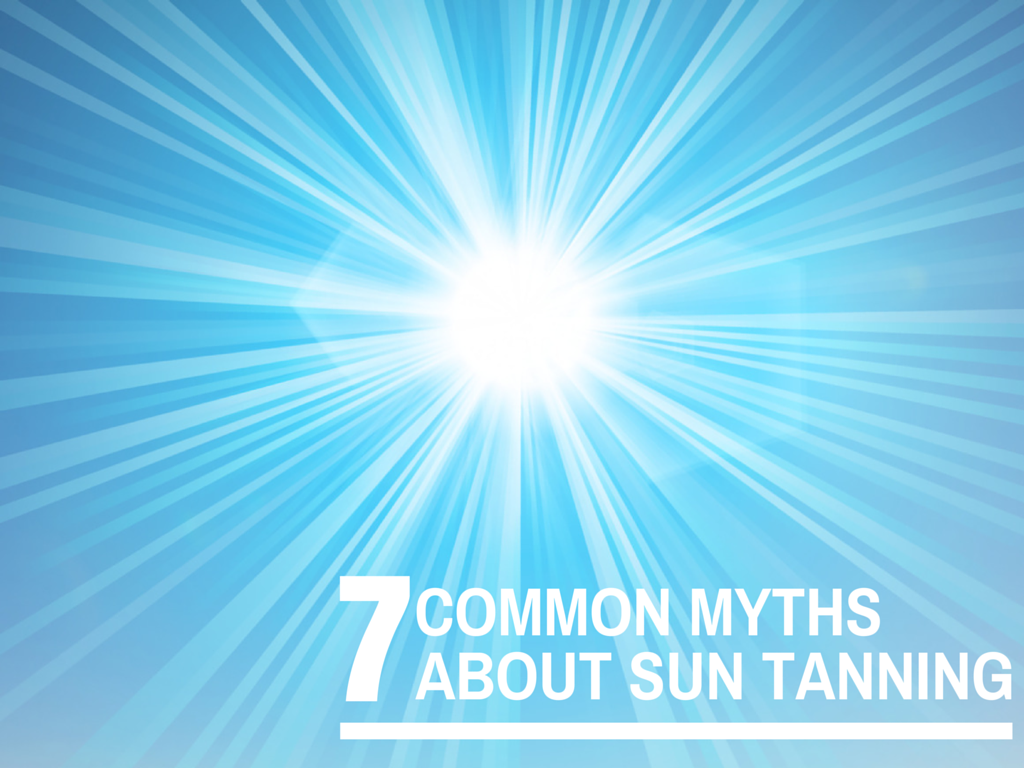Most of the misconceptions about tanning involve a lack of understanding about what is happening when the body tans.
The truth is, tanning is a reaction to skin damage.
When the sun’s energy hits the DNA in your skin cells, it causes damage and triggers a chain of events. The DNA will try to repair itself, and it’s often successful. As part of that repair process, the body’s pigmenting cells produce more pigments. These pigments are then pushed out to skin cells to better protect the DNA, almost like a sun hat.
With that in mind, let’s debunk some of the more popular myths about sun tanning.
1) I Can’t Get Cancer If I Tan Without Burning.
In order to tan, you have to damage the skin. As a result, any type of tanning is causing some level of damage to the skin. It may not damage it to the point that you destroy skin cells, but you’ll damage the skin enough that it shows a response. Maybe you didn’t get sunburn, but you did cause damage.
2) If I Build Up a Good Base Tan, I’ll Be Protected From Sun Damage.
A base layer doesn’t protect you from sun damage because your skin has already been damaged by the sun. You might not get sunburn, but that’s only because the skin has been damaged and is trying to protect itself. As a result, it will take longer for you to get sunburn, but damage has already been done.
Related: How to Spot Skin Cancer
3) Tanning Beds Are Safer Than the Sun and Don’t Cause Cancer.
Tanning beds use primarily UVB light. It causes a suntan and not sunburn, but it still damages your skin. The sun produces both UVA light, which causes sunburn, as well as UVB light. Both can cause damage and both can cause skin cancer.
4) Getting Sunburn a Few Times is No Big Deal As Long As I Don’t Burn All of the Time.
Any time you get sunburn, you’ve killed skin cells. That’s a sign of severe damage (See: [VIDEO] UV Camera Shows Hidden Sun Damage Under The Skin). Some of the surviving skin cells will be severely damaged and become abnormal. All it takes is one burn. Of course, having fewer burns is better than many burns, but the only way to prevent severe damage is by avoiding burns completely.
5) If I Can’t See Any Damage, I’m Fine.
Maybe you can’t see it today, but you’ll be able to see the damage in time. Ultraviolet light will show areas of the body that have been damaged. It will also show how the body attempts to repair those areas with pigment darkening.
Related: [INFOGRAPHIC] Skin Cancer Awareness: Who’s Got Your Back?
Look at the skin on the top of your parents’ arms and the bottom of their arms. That skin is exactly the same. The only difference is exposure to the sun. The goal is to keep your skin looking like the bottom of their arms.
6) I Don’t Have a Family History of Skin Cancer, So My Risk of Getting Skin Cancer is Very Low.
Most skin cancer is related to sun exposure, not genetics. If your parents or grandparents had skin cancer, it probably had more to do with sun exposure than anything else. However, you may have a genetic predisposition for skin cancer if you have light skin, which is more susceptible to cancer than dark skin.
7) Why Do I Need Sunscreen? It’s Cloudy Outside!
The vast majority of the sun’s rays penetrate the clouds. The sunlight may not feel as intense, but the radiation is the same as it would be on a clear day. You just don’t see the visible light spectrum.

Dr. R. Todd Plott is a board-certified dermatologist in Coppell, Keller, and Saginaw, TX. His specialization and professional interests include treating patients suffering with acne, identifying and solving complex skin conditions such as psoriasis, rosacea, atopic dermatitis, and identifying and treating all types of skin cancers. In his spare time, Dr. Plott enjoys cycling, traveling with his wife, and spending time with his children and new grandson.
Learn more about Dr. Plott.

